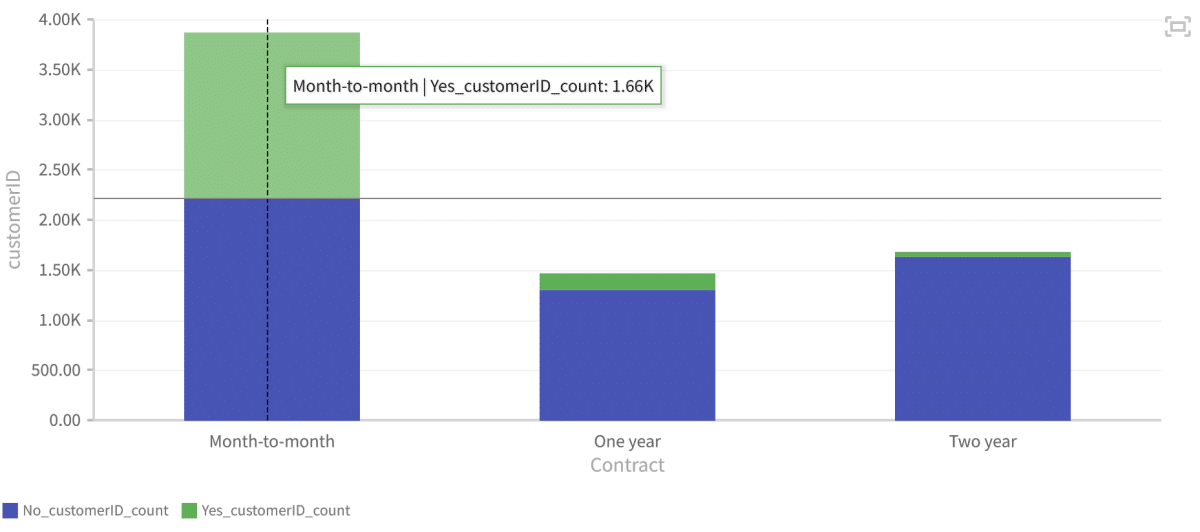Predicting Churn
Predicting churn is probably one of the essential tasks for any business. Businesses use a variety of parameters to predict customer churn, such as identifying whether a store is located in an area with poor turnover or comparing the number of products and time spent to predict how much time a customer will spend per visit.
As tedious as it sounds, the task really isn’t. Why?
Because machine learning can teach algorithms how to “see” and read data that would otherwise be difficult for humans to identify.
Intrigued?
This post teaches you everything there is to know about the applications of machine learning in predicting churn for businesses and how you can leverage it to your advantage.
What Is Customer Churn?
In simple terms, the likelihood of a customer discontinuing using a brand’s product or service is termed as churn. And while churn is an unavoidable part of the business lifecycle, keeping customer churn at its lowest possible percentage is essential.

Doing so is as simple as identifying which stage of the customer experience journey attracts the most significant churn percentage and devising appropriate marketing and customer service strategies to help stop it from happening.
For example, if a business identifies that unsatisfactory customer support is causing high customer attrition, simply training their customer service representatives to provide a better experience can counter their high customer churn rate.
How Customer Churn Impacts Businesses
“Executive teams that make extensive use of customer data analytics across all business decisions see a 126% profit improvement over companies that don’t.” – McKinsey
Aside from the obvious—no customers, no profits—a high customer churn rate can have a devastating impact on a company.
Don’t believe us? Take a look at these facts:
● Retaining an existing customer is five times cheaper than acquiring a new one.
● Businesses face a less than 20% likelihood of selling to a prospective customer than to an existing customer (70%)
Still not convinced? A slight 5% increase in your customer retention rate can increase your sales by a whopping 95%.
What’s even more fascinating is that machine learning opens up an avenue for businesses to identify customer groups that they may not have noticed before, thus giving them a better opportunity to customize the experience for said group.
How can you do the same? And more importantly, without investing a significant portion of your time and resources?
All you need is data and a program that can accurately derive insights from that data.
Let’s find out how!

Predicting Churn : Common Machine Learning Algorithms
This section will explain how each statistical technique works and what they mean to businesses.
Logistic Regression
Logistic regression works by finding the relationship between your sales data and what factors most likely influence the probability of an event happening.
In this case, the event is whether or not a customer will churn (therefore, we call this a binary problem – ‘yes’/’no’).
To do this, they include multiple variables they know will affect the outcome. The variables are then clustered into groups, and the model is constructed on each group. The groups are then used to train the model with new data.
This iterative process will repeat until the model reaches a point where it has been trained enough to predict whether or not a customer will churn accurately.
For example, take the case of a clothing store with data collected on the
- number of customers who have visited their website,
- the amount of money they have spent,
- and time spent inside the store for each day.
Let’s say this data was fed into a logistic regression, which can then consider additional parameters such as age, gender, income, number of visits to the website, and more to calculate the probability of the customer churning.
Random Forests
Random forests are used to model the effects of individual variables on a binary outcome, in this case, customer churn. Random forests work in an entirely different way than logistic regression. It’s powered by decision trees, using one of the most commonly used machine learning techniques in data science.
Decision trees are designed to learn how to react and make predictions based on new data when the outcome is binary. Unlike other decision trees, random forests are more complex and take more variables into account, making the model more accurate.
The great thing about random forests is that businesses can not only predict customer churn using customer data but also classify or categorize customers based on their propensity to churn. We are talking about customer churn prevention models.
Take the example of a company that sells healthcare products and services with data on their customers, including
- age,
- gender,
- income,
- and credit score.
Their machine learning model may be able to predict whether or not a customer with a credit score of 650 is likely to churn, but it may have trouble predicting whether or not a customer will churn who is over the age of 50.
This can be solved by splitting the dataset into different categories such as ‘very likely to churn’ and ‘likely to churn.’ Each of these groups can be trained using logistic regression and random forests respectively – to make a more accurate prediction about each subset.

No-code machine learning solution
If your business can’t afford a data science team and wants to put effort into predicting churn to prevent it, you should consider a no-code machine learning platform like Graphite.
With just a few mouse clicks, you can train your own machine learning model, predict churn, and get results in minutes.
Graphite Note simplifies the use of Machine Learning in analytics by helping business users to generate machine learning models without coding. It provides a single platform to build, visualize, and explain Machine Learning models for real-world business problems and use cases.
You can explore all other Graphite Models here. This page may be helpful if you are interested in different machine learning use cases. Feel free to train your machine learning model on any dataset with the same ease or schedule a demo if you need help or have any questions.




